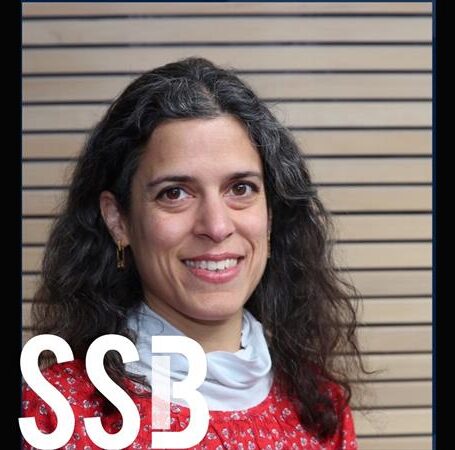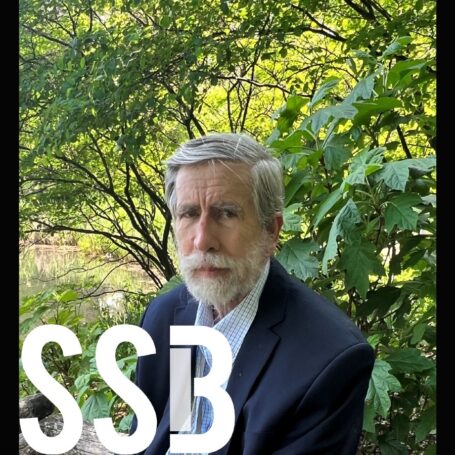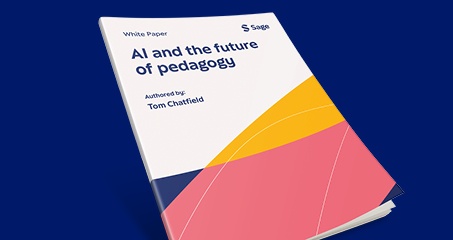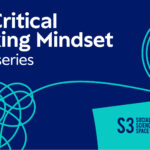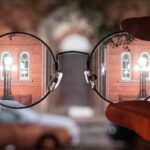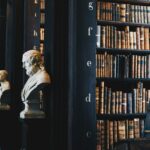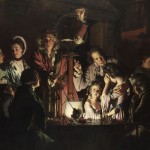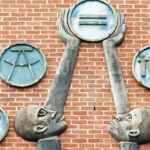COVID and Conspiracy Theories: Excerpt from ‘Together Apart’
It is to get rid of non-productive Chinese in the Chinese community, who are non-productive and in the words of George Bernard Shaw should be eliminated so they don’t have to be fed. Secondly, it is either to export the virus into the United States or other parts of the world, or at least fear of the virus. Thirdly, to test whether or not it is possible, through this sort of action, to send the Western world into recession.
Former Liberal Senator Bronwyn Bishop speaking on Sky News (see Baker, 2020)
“Conspiracies” occur when groups of people coordinate secretly to do something unlawful or inappropriate. The difference between a “conspiracy” and a “conspiracy theory” is a matter of academic debate, in large part because these things are subjective. People have different standards of proof for deciding whether a conspiracy is real. So one person’s conspiracy is another person’s conspiracy theory. Given this, the emerging norm is to use the term “conspiracy” to refer to actual, substantiated events, and to reserve the term “conspiracy theory” for beliefs that seem, on face value, to be unreasonable or highly speculative (Uscinski et al., 2017). Given the number of converging, credible and independent reports to this effect, it seems reasonable to argue that there was a conspiracy within levels of Chinese government to cover up emerging medical advice of a strange new virus that was causing deaths in Wuhan in late 2019. But it would be a conspiracy theory to argue, like Bronwyn Bishop, that COVID-19 was part of a Chinese government plan to reduce the state’s burden of care by culling vulnerable people.
Sometimes, individual conspiracy theories form part of a more general worldview: that it is commonplace for powerful groups with malevolent intentions to conduct elaborate hoaxes on the public, and to do so in near-perfect secrecy (Goertzel, 2010). This conspiracist worldview has also sometimes been called conspiracist ideation or the conspiracy mindset. This worldview makes people open to any non-official account of reality, even when such accounts are inconsistent with each other. For example, survey research shows that the more people believe Princess Diana is still alive, the more they also believe that she was murdered (Wood et al., 2012). Accordingly, it would not be surprising if people were open to inconsistent conspiracy beliefs about COVID-19: for example, that it was invented by China as a biological weapon and that it is was developed by Western governments to excuse the introduction of martial law.
Importantly, though, conspiracy theories do emerge neither spontaneously nor in a vacuum. More particularly, as we see in the case of Bronwyn Bishop, they are often peddled by leaders and people in positions of authority (e.g., ‘Shock Jocks’) with a view to shoring up support for a worldview which they represent and are seeking to advance. It is this point that ties this topic both to the concerns of this section and to the work of social identity theorists.
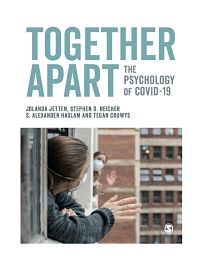
Lack of social identification underpins conspiracist worldviews
The term “conspiracy theorist” is typically used in a pejorative way, and has become shorthand for people who are prone to woolly thinking and logical fallacies. It is true that conspiracy theorists tend to have relatively low levels of formal education (van Prooijen, 2017), and are prone to intuitive (rather than analytic) thinking (Swami et al., 2014). More than other people, conspiracy theorists tend to see patterns and agency in random events (Douglas et al., 2016) and show signs of a personality type known as schizotypy, characterized by unconventional beliefs, paranoia, and disordered thinking (March & Springer, 2019).
However, focusing on these individual-level factors serves to obscure a more important pattern that emerges in the literature — namely that conspiracy theorists feel vulnerable. Relative to other people, they have low levels of trust in the community and in institutions (Goertzel, 1994). They feel powerless (van Prooijen, 2017) and report feeling low levels of socio-political control (Bruder et al., 2013). In large part, this reflects the fact that people who endorse conspiracy theories — like those who are paranoid more generally (Greenaway et al., 2019) — tend to have low levels of identification with society and its institutions. In other words, they tend to be ‘outsiders’ and cast themselves as such.
Related to this outsider status, conspiracy theorists are more likely to believe that positive societal norms and values are disintegrating. They have an abstract belief that the world is a dangerous place (Moulding et al., 2016). From this perspective, the emergence of a conspiracist worldview does not stem from poor mental health or illogical thinking (although these may also be present), but rather is a by-product of lack of identification that engenders feelings of alienation, mistrust, and social disconnection (see Haslam et al., 2018). For people who live in authoritarian regimes, the conspiracist worldview can also emerge in response to a history of propaganda, misinformation, and distortion of history from governments and other institutions. Indeed, where official versions of information are unreliable, conspiracist thinking can be a form of rational scepticism or sense-making (van Prooijen, 2019).
To explore these issues in relation to COVID-19, in early March 2020 we collected data from 1700 people in Australia, the U.S., and the U.K. in order to gain insight into the psychology of those who mistrust the official government advice on COVID-19. We gave respondents this prompt:
For some political and social events it is suggested that the “official version” of events could be an attempt to hide the truth from the public.…. When it comes to COVID, what do you think? Please indicate how much you agree or disagree with the following statement: I think that the official version relating to COVID given by the authorities very often hides the truth.
Nearly half of respondents indicated that they “somewhat agreed”, “agreed”, or “strongly agreed” with this statement. As suggested above, people who agreed were less educated than those who did not, but this effect was weak. More significant was the fact that those who embraced conspiracy theories were more likely than other respondents to feel distressed, lonely, and out of control. In line with previous evidence that paranoia is highest in marginalized members of a community (van Prooijen et al., 2018), conspiracy theories were particularly prevalent among racial minorities (e.g., Asian-Australians, African-Americans). Those who agreed with this statement also had higher estimates of the eventual death rate of COVID-19, suggesting that mistrust of government in this case manifested itself in a sense that the threat posed by COVID-19 was being downplayed.
Conspiracy theories have a social identity dimension
By definition, a conspiracy theory involves beliefs about the actions and agendas of coalitions of individuals. Thus, it is difficult to think of a conspiracy that does not have an intergroup element, one that crosses ideological, national, ethnic, religious, or political faultlines. For example, an ‘us–them’ dimension — in which China is understood as an enemy of the West — was clearly a backdrop to Bronwyn Bishop’s conspiracy theorizing. It is neither a surprise nor a coincidence, then, that Chinese people are more likely to believe that America invented COVID-19, and that Americans are more likely to believe the Chinese government invented it (Chik & Lew, 2020). Indeed, some scholars argue that the predisposition to believe conspiracy theories evolved as an adaptive tendency to be alert to — and to protect against — hostile outgroups (van Prooijen & van Vugt, 2018).
As social identity theorizing would also suggest, there is emerging evidence that conspiracy theories can be triggered by intergroup threats and feelings of intergroup powerlessness. For example, anti-western conspiracy theories in Indonesia are correlated with perceptions of threat (Mashuri et al., 2016) and anti-Semitic conspiracy theories in Poland are associated with victimhood-based social identities (Bilewicz et al., 2013). Furthermore, experimentally induced threats to the status quo in British society (Jolley et al., 2018) and to Muslim identity in Indonesia (Mashuri & Zaduqisti, 2015) led to increased endorsement of conspiracy theories. Conspiracy theories can also be used in a strategic and mindful way, as part of a broader war of disinformation designed to undermine political opponents, deflect scrutiny, promote racism, or recruit terrorists (e.g., Douglas & Sutton, 2018; Jolley et al., 2020; see also Chapter 19).
COVID-19 has all the hallmarks of an event that is ripe for the development of conspiracy theories: it is frightening, it is hard to understand, the causes are complex, and it has resulted in government curtailment of individual freedoms. In such contexts, a lack of identification with official sources of information makes their messages harder to process and to believe (Greenaway et al., 2015). And, as a corollary, those who do not identify with those official sources are much more likely to embrace non-official accounts of reality to help allay their anxiety and regain a sense of control.
Conspiracies about COVID-19 can be grouped together into three broad categories, all of which have a social identity dimension. The first of these argues that the virus was invented by a powerful outgroup to advance a malevolent agenda. As noted above, in the case of COVID-19, this is typically claimed to be the American or Chinese governments. Also included in this category are variants of the myth that COVID-19 is caused by 5G technology, as part of a hidden agenda to (for example) reduce the population, force mass-vaccination on the public, or facilitate a new world order.
The second category of conspiracy theory argues that the crisis is being exaggerated in the interests of a powerful outgroup. In this vein, conspiracy theorists claimed that the threat posed by the virus was being deliberately amplified to give governments an excuse to control the population (e.g., through the imposition of martial law). At the same time, as we saw above, a third category of conspiracy theory uses precisely the opposite reasoning to claim that the crisis is being downplayed in the interests a powerful outgroup. In particular, conspiracy theorists argue that governments and health officials have deliberately under-reported the extent of the crisis in order to avoid panic or to shore up the economy.
Responses to conspiracy theories need to address people’s vulnerability not alienate them further
There are a number of reasons to believe that there is little value in trying to change the mind of a conspiracy theorist with facts alone. For example, research on misinformation and rumours suggests that people are remarkably slow to update their thinking in the face of correction. Indeed, denials and corrections reinforce the familiarity of the original myth over time, whereas the corrections fade from memory, sometimes leading to boomerang effects (Lewandowsky et al., 2015). For people who hold the conspiracist worldview, corrective information may be particularly ineffective. First, most conspiracy theorists already know the official version of events, so there is little point repeating it. Second, because the establishment is seen to be the source of misinformation and subterfuge, authorities’ messages of reassurance are likely to fall on deaf ears. Indeed, the usual rules of persuasion — pointing out official facts and noting that there is consensus around the official version — can be inverted to be seen as proof of the conspiracy (e.g., an example of vested interests controlling the narrative). Third, many conspiracy theorists are psychologically wedded to the notion that something sinister is afoot, and fall prey to motivated reasoning and confirmation biases (Hornsey & Fielding, 2017). Conspiracy theorists refute disconfirming evidence or generate new theories to take the place of discredited ones, shifting goalposts in ways that seem fantastical, frustrating and hard to follow. Because of this, you can never really disprove a conspiracy theory.
So what advice might we have for leaders who want to respond to conspiracy theories? Well, first, resist the temptation to use conspiracist language oneself. If leaders fall into the habit of using conspiracy theories to wage intergroup battles, then they may find it hard to put that genie back in the bottle when the conspiracy theories turn on them. Beyond that, leaders need to communicate through both words and action that they are operating with integrity, and doing their best to assuage feelings of mistrust, powerlessness and alienation that provide the breeding ground for conspiracist thinking. Indeed, there is evidence that priming feelings of control in the laboratory can reduce people’s belief in conspiracy theories (van Prooijen & Acker, 2015). Responding to these feelings of vulnerability might be a more effective way of defeating conspiracy theories than repeating evidence alone.
This is an essential “long-game” that leaders need to play in winning the psychological battle over COVID-19. Although a degree of healthy scepticism about official accounts of events is to be encouraged, chronic scepticism becomes a problem, as people ignore facts and resist advice. Now is a time to be listening to our scientists and to our government officials; not to be casting them as colluders, manipulators and liars. And for leaders, now is the time to build social identification, not to undermine it.
Explore the social influence chapters of Together Apart
Introduction to Social Influence
Leadership | S. Alex Haslam
The ultimate proof of leadership is not how impressive a leader looks or sounds, but what they lead others to do.
Compliance and Followership | Niklas K. Steffens
What drives compliance and followership? When do people choose not to comply with advice or regulations? What are helpful (and not so helpful) forms of followership?
Behaviour Change | Frank Mols
Social identity processes are a key source of human strength, and that leaders who tap into these are best positioned to drive the forms of behaviour change required to defeat COVID-19.
Conspiracy Theories | Matthew Hornsey
Conspiracy theories are often peddled by leaders and people in positions of authority with a view to shoring up support for a worldview which they represent and are seeking to advance.

